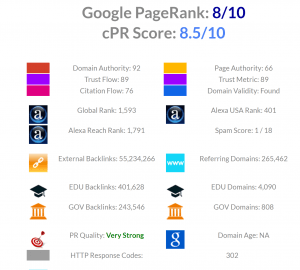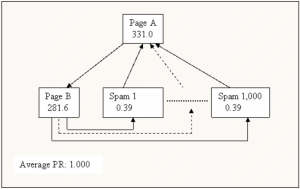Pagerank Vices and Relevance
Piqued by the notion of websites being valued using page rank, I searched the page rank of cornell.edu.
(tbh: I don’t know how accurate this source is: https://checkpagerank.net/)
But the result wasn’t not different from what I had expected. This then further interested to me to explore ways people have tried to exploit this, leading me to this website:
https://www.link-assistant.com/news/page-rank-2018.html
First thing interesting was the difference in the analogy used for the damping factor between the one used in this article and the one used in lecture. In the edx, the analogy was that the pagerank is rained down over the websites so that the websites downstream don’t accumulate page rank over time. In the article, it is likened to a surfer who randomly clicks on links and continues to do so with a probability of the damping factor.
I really enjoyed its discussion of link farms and spam. It first mentions the premise on which Pagerank was released public, but just like poorly constructed legislature can create de facto side effects, exploitation became huge. When link farms began to become penalized by Google, the link farms lay low, with those getting caught only to be replaced by more farms. Spam also screwed up the Pagerank system. Employing network archetypes that illustrate anomalies in the Pagerank calculation from Ian Roger’s examples (http://www.sirgroane.net/google-page-rank/), the article proceeds to illustrate how such anomalies can be used to skew the Pagerank of an undeserving website. For instance, example 13 illustrates an interesting anomaly in which a site, usually a disreputable one, creates a bunch of spam websites that link back to itself after being linked by a single outlet link from the main site.
Although the mean Pagerank is still 1, because there are so many spam websites that don’t have a lot of PR, Page A and Page B have a lot of PR to balance the mean to 1. As for the relevance of Pagerank, people are discovering other indicators of a strong website like implied links and backlinks. One measure using backlinks is the URL Rating developed by Ahref which determines the strength of a target website between 1 to 100. Pagerank, however, although removed from public use, still remains a prominent measure in the undergrounds of the web.


